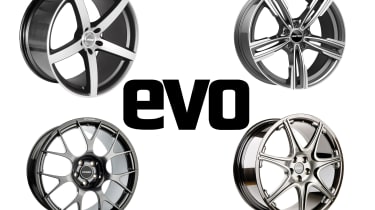The major car makers have a pretty good strike rate in styling alloy wheels for the cars that matter. Think air-cooled Porsche 911s, many a Ferrari, fast BMWs galore, RS Audis, Ford Escort XR3 and Puma, Lancia Delta Integrale, Peugeot 205 GTI 1.9 – and others you’re already shouting about.
That might have made things difficult for aftermarket alloy wheels makers, but when a wheel becomes ubiquitous, there are always those who want to stand out from the crowd, even if that crowd congregated to celebrate good taste.
> Aftermarket car suspension explained
It’s slightly different today. Car makers have cottoned on to the financial potential of offering a choice of alloys, in a variety of sizes, and many of those wheels are good lookers. Why trawl the aftermarket when it’s so easy to just tick another box on the options sheet?
Yet the aftermarket prevails. Despite the choice offered by the OEMs, its repertoire remains far greater. And it has another weapon: size. Darryl McNey, group sales director of UK-based Rimstock, which produces Team Dynamics wheels amongst others, explains: ‘What people expect from the aftermarket, and what the aftermarket delivers, are larger wheel sizes in either diameter or width. It has become harder though, as the OEMs have increased their sizes; we’re in an era where small hot hatches come on 18s as standard. So we have to stay one step ahead. It’s now quite normal for us to produce 23in wheels and 24in is the new ambition of the market. Such extreme sizes are in part driven by the fact that commercials – vans and pickups – are the biggest growing sector of the market.’
Huge wheels may grab eyes and headlines, but the aftermarket still develops new products around the ethos of ‘lighter, faster, stronger’. Ever-more sophisticated CAD programs have helped enormously in pursuing that goal, identifying areas of the wheel where it’s possible to remove metal – and thus save weight – without affecting its structural integrity. Look closely at modern wheels and you may see evidence of this in the slenderness of the spokes and thinness of the wheel rim; you might notice grooves channelled into the sides of the spokes and, on the rear, spot where large amounts of metal have been removed from, say, the wheel’s hub where it mates to the car’s hub. And this more intimate knowledge of structural influences has allowed wheel designers to exercise more creative flourish.
How to choose the best aftermarket alloy wheels for your car | evo

